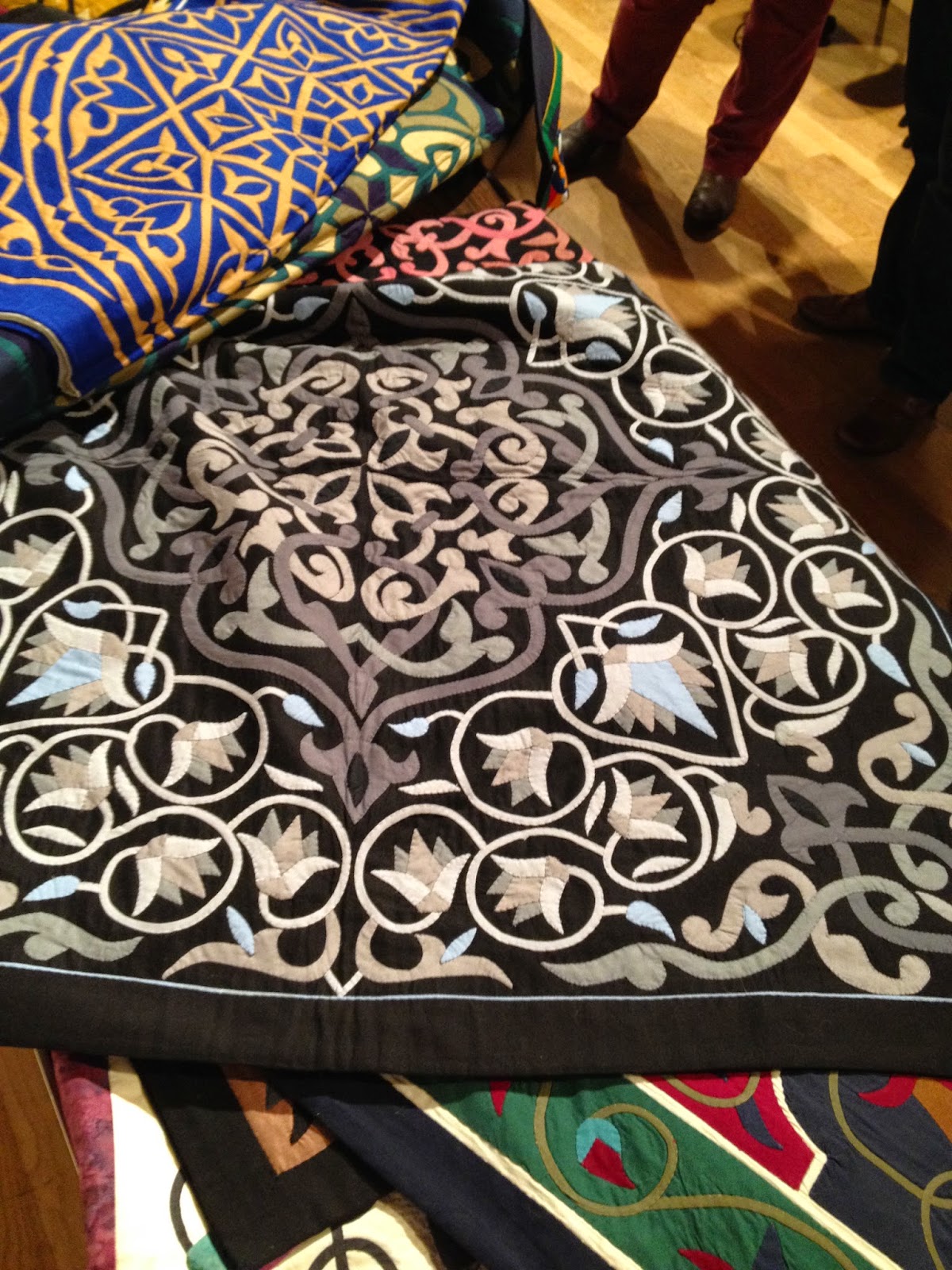Last night's session at Richmond and Kew Quilters was from Barbara Chainey - an entertaining speaker, clearly passionate about the Cairo craftsmen who decorate these tents and the results.
The 'tents' are made like a patchwork quilt (three layers) but are traditionally used more like a curtain - they were originally huge, but were too big and heavy for tourists to buy and take home, so they now make smaller versions suitable for wall hangings.
This technique has been in existence for probably 5000 years, but (quote from Wiki) "Despite their historic legacy, the 'tentmaker' occupation is now endangered. This is largely due to competition from imported mass-printed fabrics bearing similar decorative patterns."
The senior tentmaker in each family group will have drawn a design on a wedge of papers, a young lad will have pricked the design onto canvas, rotating the wedge until he has transferred the design onto the whole canvas, and it is then clarified using a pencil. The men sit cross legged with a pair of shears nearby, and roughly cut a suitably sized piece of fabric, and fold it while they stitch it so it the the required size. You may be thinking of needle turn applique - but at the speed of light with no evidence of precision cutting at all
I saw the tent makers at work at the Festival of Quilts a few years ago, and could have stood for hours watching them. Each piece will have been worked by one person, they start their training as a gofor at the age of about 8, and have stopped by the age of 40 or so
Barbara brought along dozens and dozens of these for us to look at (and touch and photograph) and talked us through her discovery of and learning about these works of art, and the families who make them
In the end the table looked like a souk market place!
The colours and the designs are specific to each family, and by the end of the talk even we could recognise which items had been stitched by the same family: this pink version and the following blue version being a prime example
In some cases the stitches were visible (an apprentice's work)
But in others, they were not (a master's work)
For the tourist market some are now pictures rather than patterns
And others show the influence of patchwork : Dresden plates meets Cairo Tentmaker
If you ever go to Cairo, could you just pop along to the Street of the Tentmakers and get one for me! One like this would be grand; this one was my absolute favourite
I started this blog for me - it expanded to show BFF Jackie what I was doing - and a few others have invited themselves too - everybody welcome! Mostly about patchwork, with random comments about embroidery, family and life in general, come on in, put your feet up, and I'll put the [virtual] kettle on.








Thanks for this post Benta - weren't they incredible pieces?
ReplyDeleteThis is one reason why I 'rescue' needlework at garage/estate sales.
ReplyDeleteYou are lucky to see these in person.
Very nice, you were lucky to see them so close.
ReplyDeleteWow, those are amazing!
ReplyDeletewhat an interesting talk that must have been and so many pieces to look at too.
ReplyDeleteI saw them at the Carrefour (France) some years ago - just amazing. And all by hand ... WOW.
ReplyDeleteThese do look fab - I was vexed not be able to stay and see them in person! Thanks for the photos, though - amazing work. Loved the pic showing the size against a finger to show the scale.
ReplyDeleteI clearly need to carry on practicing my applique!
Amazing workmanship and Barbra is a very entertaining lady. I had the pleasure of a workshop with her a few years ago
ReplyDeleteInteresting. I agree with you, that last one is particularly beautiful.
ReplyDelete